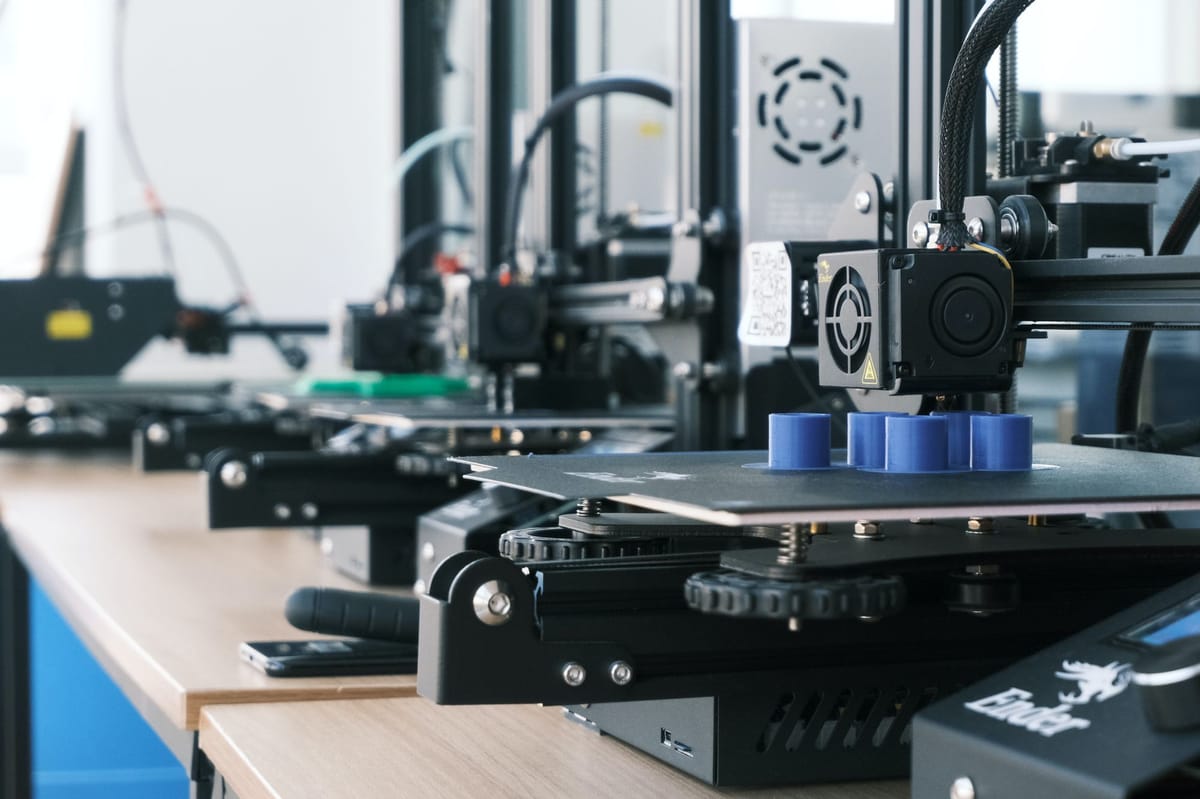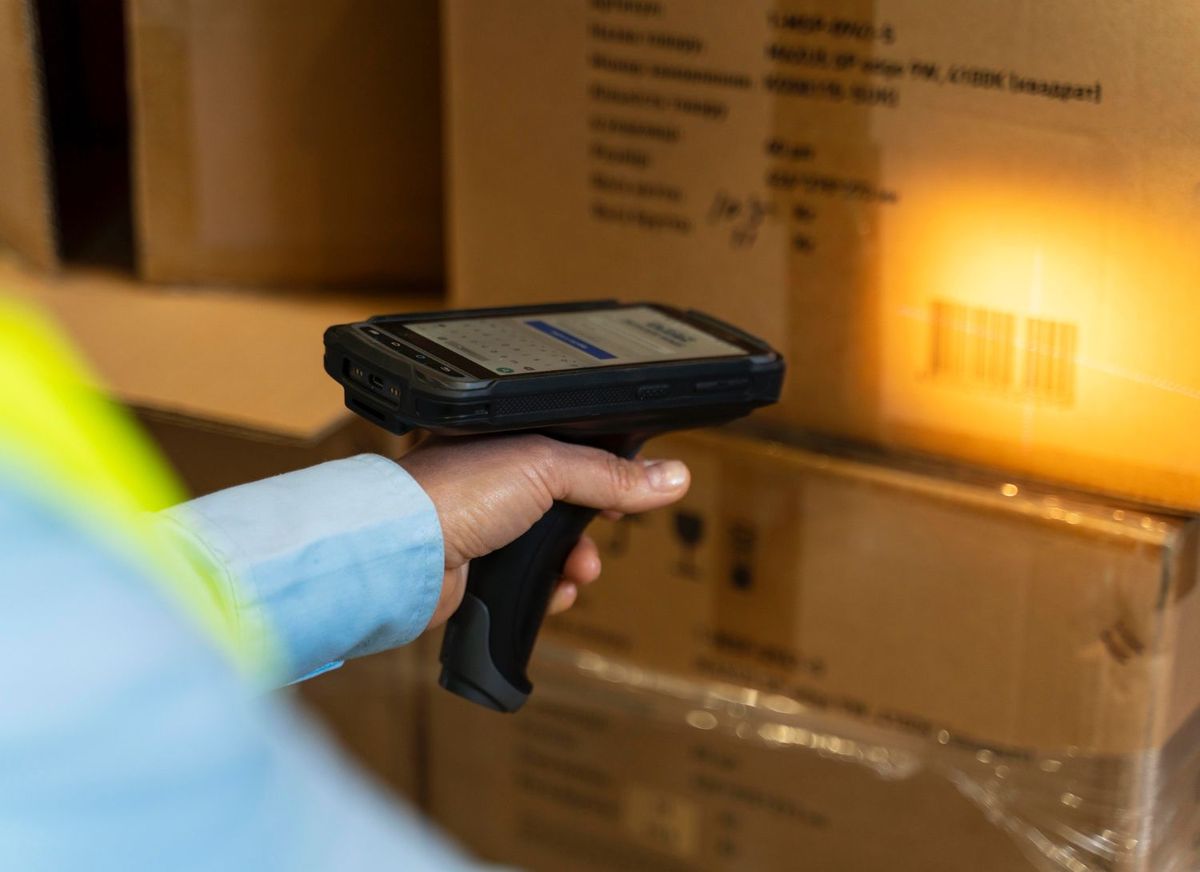Tech-based Solutions for Wholesale Distribution

The world of wholesale distribution is dynamic and highly competitive, and managing inventory efficiently can be your key to success. While large enterprises often employ cutting-edge inventory management technology, it's a different story for small businesses.
Most small businesses still employ traditional manual systems for inventory management. However, it can potentially have a negative impact on the overall development of a small business.
In this write-up, we’ll explore the advantages and disadvantages of manual inventory systems. You'll also get to know about the best inventory management technologies that prevent inventory build-up and empower your small wholesale distribution business.
Continue reading!
Small Businesses and Manual Systems
Surprisingly, 43% of small businesses still manually manage inventory due to resource constraints. A manual inventory system, as the name suggests, revolves around the painstaking process of performing due diligence on each item within your inventory and recording their details on paper or Excel spreadsheets.
Barcode scanning is one such system that is widely used but isn’t properly optimized to yield desired outcomes.

Barcode Scanning for Wholesale Distribution
Barcode scanning technology is widely adopted for efficiently tracking and managing inventory items. It revolves around using barcodes, which are numbers and parallel lines of various widths.
These barcodes contain product information, like the product's name, SKU, and sometimes pricing details. Using an adhesive, they are manually attached to inventory items, allowing for the rapid and accurate reading and recording of product details.

Employees use a barcode scanning device or smartphone to scan the product barcode. The system instantly records its information, including product name, quantity, and pricing. This process eliminates human error, reducing the risk of inaccuracies in your wholesale distribution inventory records.
However, like many other ways of inventory check and management, barcode scanning has its own share of pros and cons.
Benefits of barcoding stock system
Some of the pros of barcoding are:
1. Track Inventory Properly and Reduce Errors
Barcode scanning systems excel at maintaining accurate inventory records. By using unique barcodes for each item, these systems ensure that products are tracked with precision.

When employees scan items, the information is automatically recorded in the inventory management system, leaving minimal room for manual data entry error, which hovers around 1%. This accuracy helps prevent discrepancies, stockouts, and overstock situations.
2. Super Helpful for Marketplace Automation
Barcode scanning systems also help automate your marketplace, making them a critical component in streamlining wholesale distribution operations. They seamlessly integrate with marketplace automation systems, allowing for efficient order processing, inventory updates, and shipping management. This synergy not only saves time but also enhances overall operational efficiency. So, your business can meet the demands of the rapidly evolving marketplace.

Drawbacks to Barcode Systems
Here are a few cons of using barcode scanning systems for your wholesale distribution inventory management that you must consider:
1. Difficult to Update in Real Time
Barcode scanning systems significantly improve accuracy and efficiency, but it's also important to note that they typically don't update data in real-time. These systems usually rely on periodic batch updates. It means there may be a delay between a product leaving the shelf and the system reflecting that change. This limitation can be a drawback for businesses that require immediate access to up-to-the-minute inventory information.

2. One Item at a Time
Unfortunately, barcode scanners read only one barcode at a time. This can be a bottleneck when dealing with many products that need to be processed quickly. Take an example of wholesale distribution that involves handling numerous items simultaneously, especially during peak order fulfillment periods.

Scanning items individually during that time can slow down operations. Therefore, businesses may need to invest in additional workforce or advanced scanning equipment to cope with high-volume, time-sensitive tasks efficiently.
Systems and Strategies that Work Together with Barcode Scanners to Create a Better Synergy
Undoubtedly, barcode scanning systems have cons, but you can overcome those using various analyses and systems. Here are a few of those:

ABC Analysis

This technique categorizes inventory items into three groups—A, B, and C—based on their portion of the revenue. Group A items typically make up a high portion of the revenue, while Group C items make up a lower portion of the revenue. Wholesale distribution businesses can increase or decrease the level of effort and attention to the value of items, optimizing their inventory management strategies.
In addition, using barcode scanning systems with the ABC analysis technique facilitates accurate classification and tracking of items. This helps ensure that resources are focused where they matter most, reducing costs and enhancing profitability.
Data Analytics

Data analytics, when integrated with barcode scanners, creates a powerful synergy that transforms wholesale distribution inventory management. Barcode scanners capture product information, helping to track inventory levels, sales transactions, and even shelf-life expiration dates.
This data is then seamlessly fed into analytics systems, where it's processed, analyzed, and monitored. You can then use this information to pinpoint when to reorder products, thereby minimizing stockouts and excess inventory.
Big Data in Wholesale Distribution Inventory Management
Big data technologies are actually the tools and frameworks to collect and process vast amounts of data for generating valuable insights for businesses. A few of the notable frameworks include Apache Hadoop, Apache Kafka, IoT Sensors, Amazon Redshift, Google BigQuery, Power BI, Snowflake, etc.
Employing suitable tools allows wholesale distributors to process and analyze vast amounts of data at scale. These technologies enable data collection, storage, and retrieval from numerous sources, including barcode scanners. This provides you with real-time updates on your inventory - something that was missing in barcode scanning systems.

Examples of Big Data
Traditionally, barcode scanners mainly relied on manual updates. A cloud system is updated in real-time as soon as the product is scanned at any of your stores. In this process, RFID (Radio Frequency Identification) and IoT (Internet of Things) sensors track products in your stores.
Data injection tools like Apache Kafka fetch the data which is later processed by the Apache Flink framework. Then, Tableau data visualization tools collect the processed data and display the real-time inventory information. It will keep you updated about real-time inventory levels across all locations.
On top of that, the storage and analysis of large datasets (using Cassandra or MongoDB frameworks) allow you to conduct in-depth analysis and reporting. You also learn about cost analysis, quality control, and supplier performance evaluation, all of which contribute to better decision-making and cost optimization.
For instance, you’re selling perishable goods, let’s say fruits in New Jersey. With the power of big data combined with technologies like IoT sensors, you can check the temperature of the fruits and forecast when they’re likely to have perished. It will help you reduce waste while ensuring timely deliveries of fresh products. You can also employ analytics frameworks like Apache Spark and Apache Hadoop to analyze historical data and understand consumer behaviors.
However, remember that using complex systems and technologies simultaneously can make it difficult for you to manage inventory. But there's nothing to worry about as multiple cloud-based software or apps are available, establishing a great synergy between these systems.
Inventory Forecasting Algorithms

Inventory forecasting relies on various algorithms and models to predict future demand accurately. These algorithms analyze historical data and market trends and help you make informed predictions regarding the purchase demand for your products. Two commonly used inventory forecasting algorithms are:
- Moving Average: The Moving Average algorithm calculates the average of past demand data over a specified period, providing you with an estimate of future demand.
- Exponential Smoothing: It assigns exponentially decreasing weights to historical demand data, giving more weight to recent observations for responsive demand forecasting.
If you use inventory management software, it'll come with all the advanced algorithms and help you track your inventory. You can also use it to optimize your wholesale distribution inventory, turn orders, and forecast future demand.
BoxHero - Your Ultimate Wholesale Distribution Inventory Management App

Wholesale distribution inventory management through barcode scanning systems may improve efficiency but still lacks real-time updates and doesn't offer future forecasting. To solve this issue, BoxHero can be the ultimate savior! BoxHero is a cloud-powered inventory management app that offers secure and real-time access to vital inventory data. It gives businesses the tools they need to efficiently manage and optimize their stock.
This technology-driven solution not only ensures data security but also simplifies the entire inventory management process, from generating barcodes on demand to creating real-time Purchase Orders, Sales Orders, and Invoices. Furthermore, the app empowers users to gain valuable insights through inventory data analysis, enabling data-driven decisions that can elevate business performance.
So, get in touch and have your inventory management solution now!


